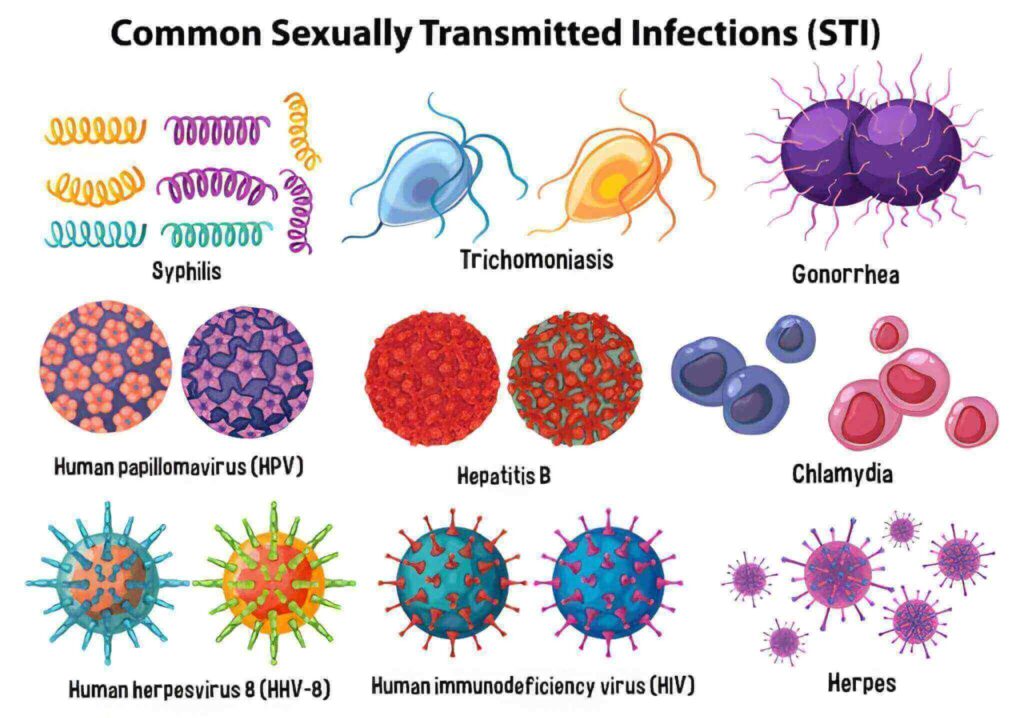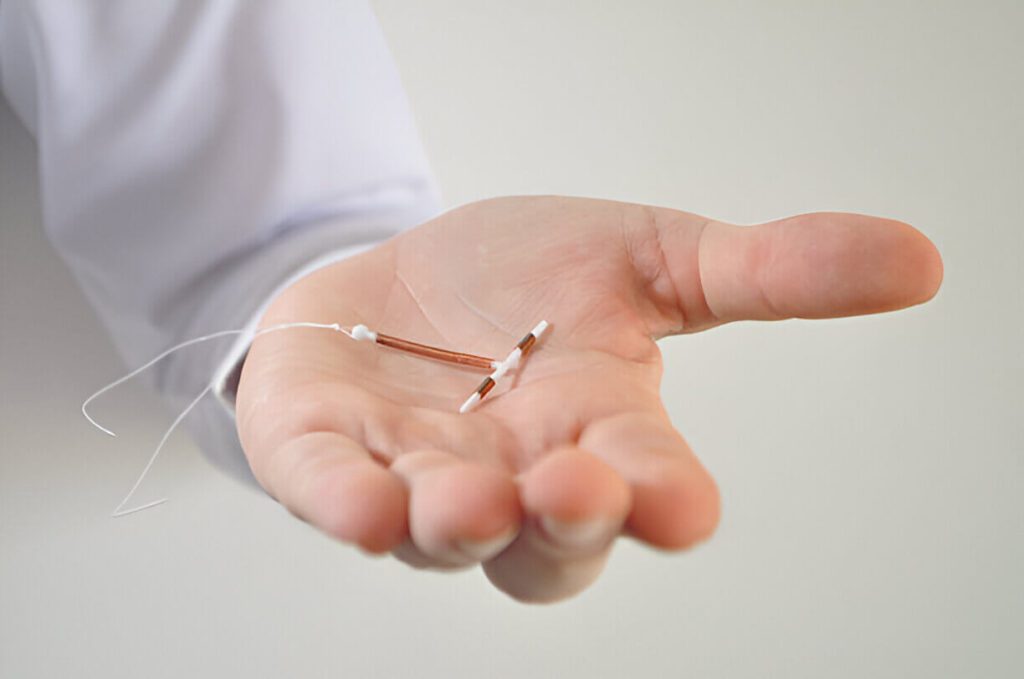Sexually transmitted diseases (STDs) vary widely in symptoms, severity, and long-term effects. Some infections are easily treated, while others can cause lifelong complications — or even become life-threatening. If you’ve ever wondered what are the worst STDs, this guide offers a clear, medical perspective based on current clinical evidence and patient experience.
This article ranks the worst sexual diseases by their long-term impact, treatment difficulty, and risk of complications — helping you understand why regular testing and prevention matter so much.
Understanding How STDs Differ in Severity
Not all sexually transmitted diseases are equally dangerous.
Some infections, like chlamydia or gonorrhea, can be cured with antibiotics. Others, such as HIV or herpes, have no permanent cure and can stay in the body for life.
When evaluating the worst STDs, healthcare professionals consider:
-
Chronic nature (does it stay for life?)
-
Impact on quality of life
-
Potential for long-term damage or infertility
-
Ease of transmission
-
Availability of treatment or cure
STD Chart: Ranked From Worst to Less Severe
Here’s an evidence-based STD chart ranking some of the most serious sexually transmitted diseases — from worst to least severe in terms of long-term health outcomes:
| Rank | STD Name | Caused By | Curable? | Why It’s Serious |
|---|---|---|---|---|
| 1 | HIV/AIDS | Virus | No | Attacks immune system, life-threatening if untreated |
| 2 | Hepatitis B & C | Virus | Partial/No | Can cause chronic liver disease and cancer |
| 3 | HPV (Human Papillomavirus) | Virus | No (but vaccine available) | Can cause cervical, anal, or throat cancers |
| 4 | Syphilis | Bacteria | Yes | Causes brain, nerve, and organ damage if untreated |
| 5 | Herpes (HSV-1 & HSV-2) | Virus | No | Chronic pain, stigma, and recurring outbreaks |
| 6 | Gonorrhea | Bacteria | Yes | Drug-resistant strains emerging |
| 7 | Chlamydia | Bacteria | Yes | Causes infertility if left untreated |
| 8 | Trichomoniasis | Parasite | Yes | Increases risk of other infections |
Now, let’s look at the worst STDs to live with in more detail.
1. HIV/AIDS – The Most Serious STD
HIV (Human Immunodeficiency Virus) is widely considered the worst STD due to its potential to destroy the immune system if untreated.
Why It’s Serious:
-
Attacks white blood cells, leaving the body unable to fight infections.
-
If untreated, it progresses to AIDS (Acquired Immunodeficiency Syndrome).
-
Once diagnosed, it requires lifelong antiretroviral therapy (ART).
Current Outlook:
The good news is that HIV is now manageable. With early detection and medication, people can live long, healthy lives and prevent transmission.
2. Hepatitis B and C – Silent but Deadly
Hepatitis B (HBV) and Hepatitis C (HCV) are viral infections that affect the liver. They spread through sexual contact, contaminated needles, and sometimes childbirth.
Why It’s Serious:
-
Chronic infection can lead to liver cirrhosis or liver cancer.
-
Many people don’t show symptoms until advanced stages.
-
There’s a vaccine for Hepatitis B, but not for Hepatitis C.
Treatment:
-
HBV: Antiviral medications help control the infection.
-
HCV: Modern antivirals can cure Hepatitis C in most patients if detected early.
3. HPV (Human Papillomavirus) – The Hidden Cancer Risk
HPV is one of the most common sexually transmitted infections, but also among the most misunderstood.
Why It’s Serious:
-
Some HPV strains cause genital warts, while others cause cancers of the cervix, anus, throat, and penis.
-
The infection often shows no symptoms, so many people unknowingly spread it.
Prevention:
-
The HPV vaccine (Gardasil 9) protects against high-risk strains responsible for most HPV-related cancers.
-
Routine Pap smears and HPV testing are essential for women’s health.
4. Syphilis – The Great Imitator
Once nearly eradicated, syphilis has made a comeback in many countries. It’s caused by the bacteria Treponema pallidum and progresses through several stages.
Why It’s Serious:
-
Early stages cause sores and rashes; later stages damage the brain, heart, and nervous system.
-
If untreated, it can lead to blindness, paralysis, or death.
-
It can also be passed from mother to baby during pregnancy (congenital syphilis).
The Good News:
Syphilis is completely curable with antibiotics like penicillin — if diagnosed early.
5. Herpes (HSV-1 and HSV-2) – A Lifelong Companion
Herpes is caused by Herpes Simplex Virus type 1 and type 2 (HSV-1 and HSV-2).
Why It’s Serious:
-
It’s incurable — the virus remains in nerve cells permanently.
-
Causes painful blisters, itching, and recurrent outbreaks.
-
Emotional and social stigma can affect relationships and mental health.
Transmission:
-
Spread by direct skin contact, even when no visible sores are present.
-
Antiviral medications like acyclovir can manage outbreaks and reduce transmission risk.
6. Gonorrhea – A Growing Superbug
Gonorrhea, caused by Neisseria gonorrhoeae, was once easily cured with antibiotics.
However, drug-resistant strains have made it one of the most concerning bacterial STDs today.
Why It’s Serious:
-
Can lead to pelvic inflammatory disease (PID), infertility, and joint infections.
-
In men, it may cause painful urination and testicular inflammation.
-
New antibiotic-resistant forms are making treatment more difficult.
Prevention:
Safe sex practices and regular screening are essential for early detection and treatment.
7. Chlamydia – The Silent Threat
Chlamydia trachomatis is a common bacterial infection that often causes no symptoms, earning it the nickname “the silent infection.”
Why It’s Serious:
-
Untreated chlamydia can cause infertility in women and epididymitis in men.
-
Increases risk of contracting HIV.
-
It’s easily treated with antibiotics — but only if diagnosed.
8. Trichomoniasis – Often Overlooked but Common
Caused by a microscopic parasite (Trichomonas vaginalis), trichomoniasis is the most common curable STD.
Why It’s Serious:
-
Causes itching, discharge, and discomfort.
-
Can increase the risk of acquiring other infections, including HIV.
-
Easily treated with oral medication, but underdiagnosed due to mild symptoms.
The Worst STDs to Live With
When people ask, “Which STD is worst to live with?”, the answer depends on impact and manageability:
-
HIV: Requires lifelong treatment but is manageable with care.
-
Herpes: Chronic and recurring, affecting mental and emotional health.
-
HPV: Some strains lead to cancer years later.
-
Hepatitis B/C: Can be fatal if untreated.
These infections profoundly affect both physical and emotional well-being, which is why early detection and prevention are critical.
Protecting Yourself from the Worst STDs
Prevention is always better than treatment.
Here’s how to protect yourself from the most serious STDs:
-
Use protection: Condoms and dental dams lower risk.
-
Get tested regularly: Especially if you have new or multiple partners.
-
Limit sexual partners: Reduces exposure risk.
-
Get vaccinated: HPV and Hepatitis B vaccines are highly effective.
-
Seek treatment promptly: Early care prevents complications.
Expert Insight — Oluwakemi Balogun, CRNP, FNP-BC, MSN
“The worst STDs aren’t just about physical symptoms — they’re about long-term consequences and emotional burden. Education, prevention, and open communication are key to sexual health and peace of mind.”
Final Thoughts
So, what are the worst STDs?
Diseases like HIV, Hepatitis B and C, HPV, and Herpes rank among the most severe due to their lifelong nature and potential complications.
However, with regular testing, vaccines, and safe practices, you can protect yourself and your partner from even the worst sexual diseases.
Remember — early detection saves lives. Visit a trusted walk-in medical center or primary care clinic for confidential STD testing and expert care.
Disclaimer: This is informational content, not a substitute for professional medical advice.

CRNP, FNP-BC, MSN is a board-certified Family Nurse Practitioner with 16+ years of experience. She provides personalized, high-quality care in family medicine, preventive health, and chronic disease management at MedHaven Health in Glen Burnie, Maryland. Read More







